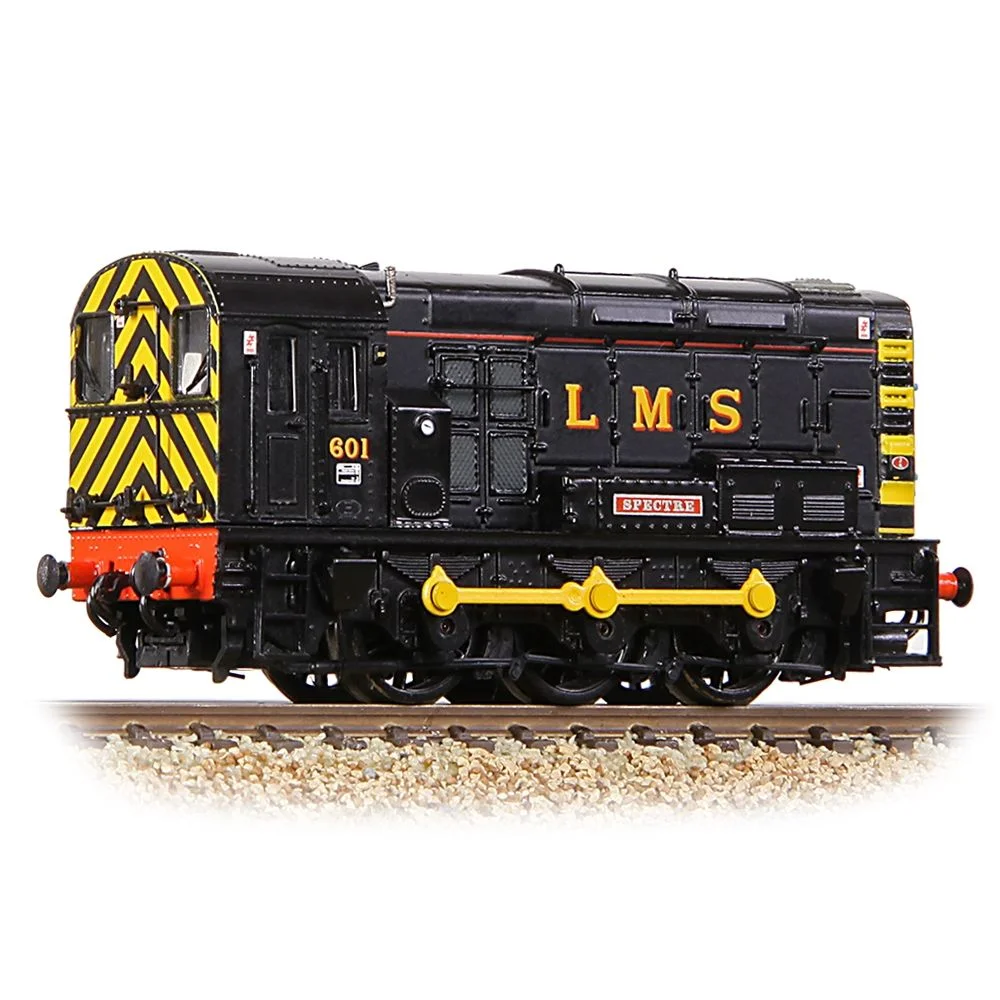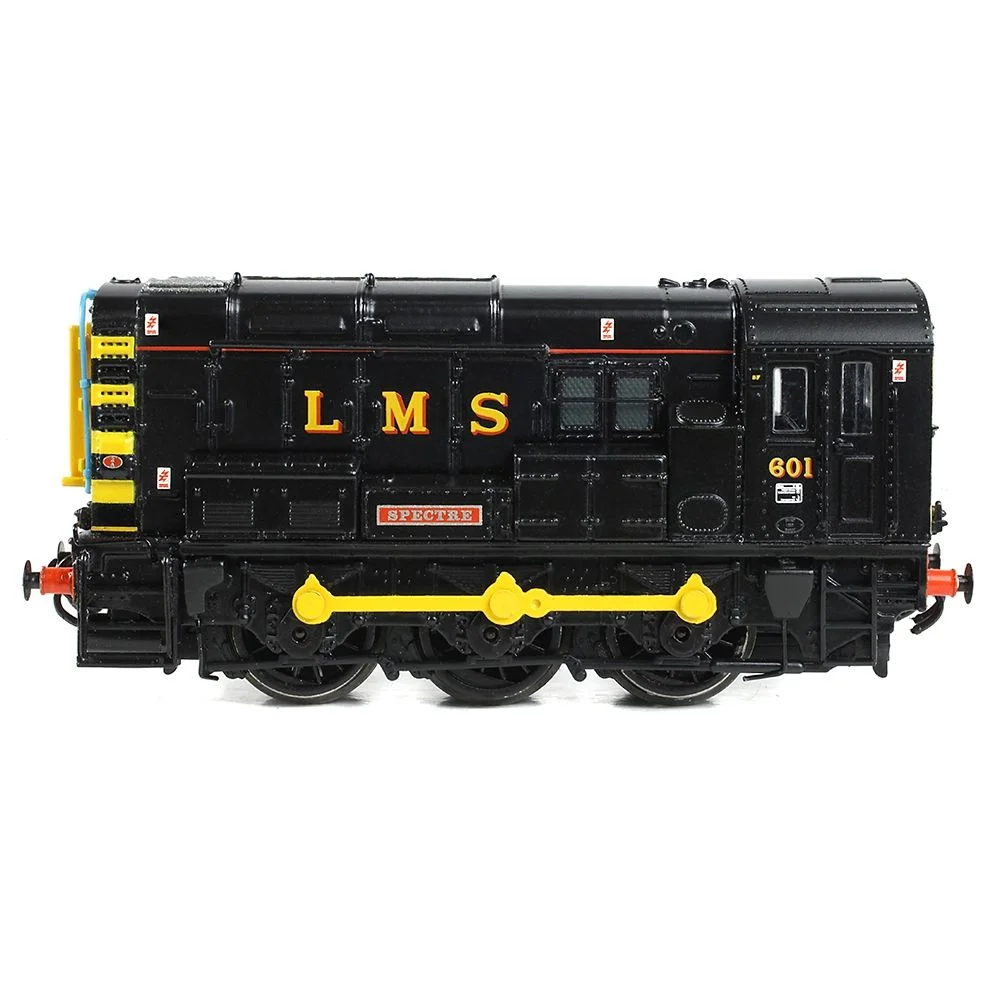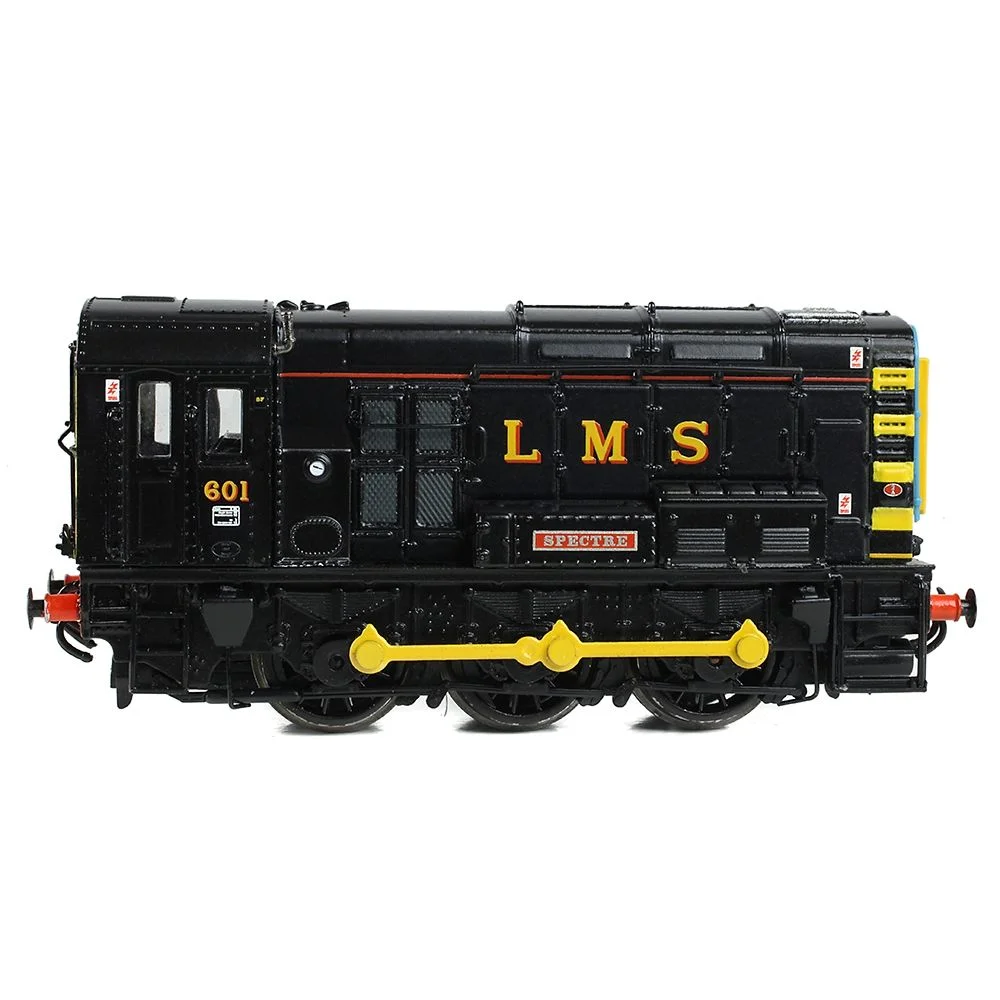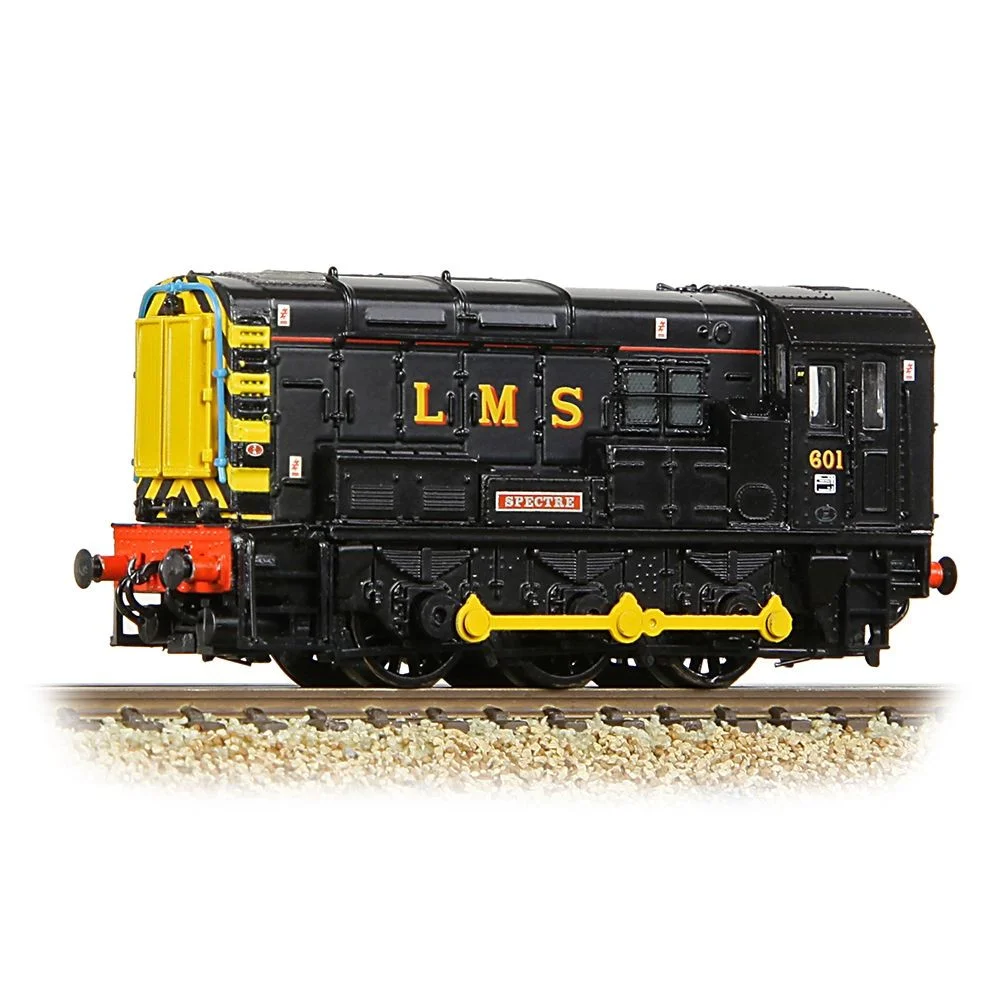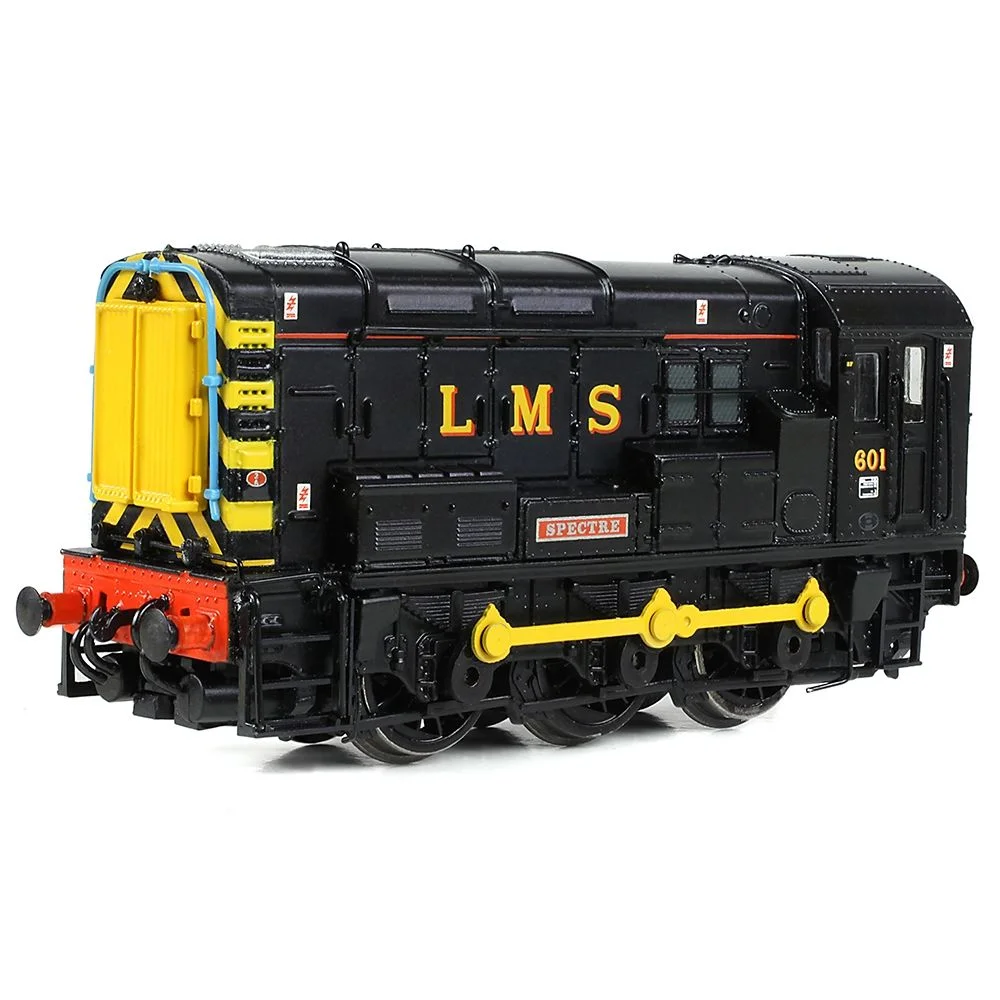Graham Farish 371-020DB
British Rail Class 08 601 "Spectre" London, Midland & Scottish Railway Black
Class & Prototype
- Class: British Rail Class 08
- Traction: Diesel
- Transmission: Electric
- Built: 1952-1962
- Total Built: 996
The British Rail Class 08 diesel-electric shunter represents Britain's most numerous locomotive class with 996 built 1952-1962. Powered by the reliable English Electric 6KT diesel engine producing 350-400hp, these 0-6-0 yard locomotives continue working after seven decades, with 100-170 still in active service alongside 87 preserved examples. The Class 08's universal deployment across freight yards, passenger stations, and industrial sidings from 1953 to present makes it the most versatile British diesel for model railway layouts.
No prototype found.
Operator & Livery
- Operator: London, Midland & Scottish Railway
- Livery: Black
The London, Midland & Scottish Railway (LMS) was Britain's largest railway company from 1923-1948, formed by merging over 120 independent railways under the Railways Act 1921. Operating 7,790 route miles across England, Scotland, Wales, and Northern Ireland, the LMS became the world's largest transport organisation and the British Empire's biggest commercial enterprise. Famous for iconic locomotives like the streamlined Princess Coronation class, versatile Black Fives, and Royal Scots, the company evolved from inherited pre-grouping designs to revolutionary Stanier innovations. The LMS operated major routes including the West Coast Main Line from London Euston to Scotland, serving as the UK's second-largest employer after the Post Office. Nationalised in 1948 to form British Railways' London Midland Region, the LMS legacy continues through extensive preservation efforts and remains a favourite subject for railway modellers seeking authentic British steam-age prototypes.
The LMS plain black livery served as the standard finish for freight locomotives and represented practical railway economics during the company's existence. Applied without lining or embellishment, this utilitarian scheme recognised that goods engines operated in inherently dirty conditions where elaborate paintwork proved both expensive and impractical.
Most LMS freight classes including the ubiquitous 0-6-0 goods engines, 0-8-0 heavy freight locomotives, and tank engines used for shunting duties wore plain black throughout their service lives. The scheme extended beyond locomotives to goods wagons, where black paint provided adequate weather protection at minimal cost.
During World War II, plain black became increasingly common as material shortages and wartime economies forced the abandonment of more elaborate liveries. Even some passenger locomotives temporarily adopted unlined black finishes when crimson lake supplies became unavailable. The practical benefits of black paint - its ability to hide dirt, soot, and industrial grime - made it ideal for locomotives working coal trains, mineral traffic, and heavy industrial duties.
For modellers, plain black represents the workhorse reality of LMS operations, particularly appropriate for freight yards, colliery branches, and industrial settings where authentic weathering and operational realism take precedence over passenger train glamour.
